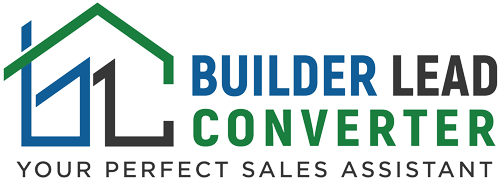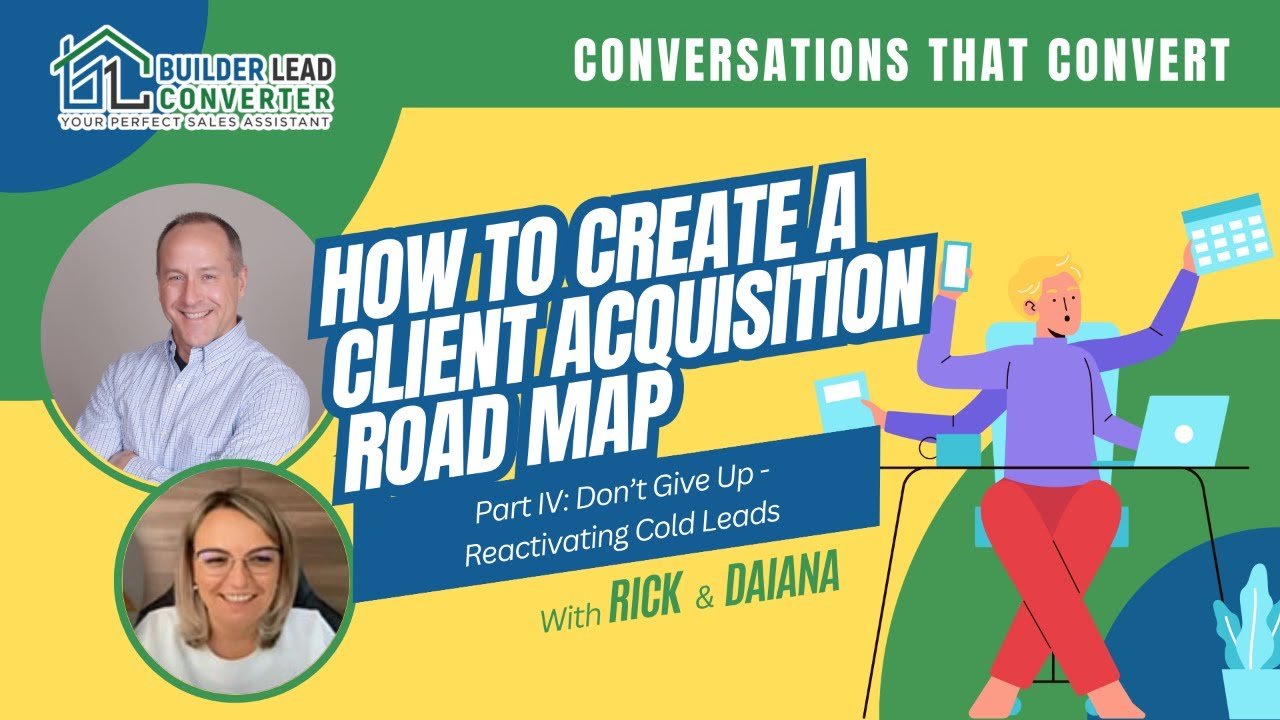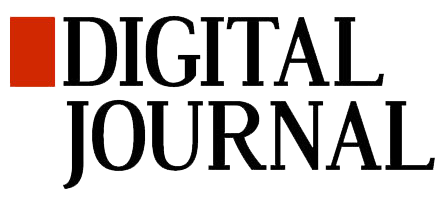How long should you follow up with an unresponsive lead?
What about those old, cold leads that you never connected with- are they worth re-engaging?
You spend countless hours and resources on lead generation, nurturing relationships to seal a deal. But what about those leads that seemed to slip through the cracks or were put on the back burner?
It’s time to bring them back into your sales pipeline!
In this fourth episode of our series “How to Create a Client Acquisition Road Map”, we will discuss the importance of reactivating cold leads and how it can significantly impact your business growth.
So put your energy drinks aside, watch/listen/read this episode instead, and dive into some effective techniques for reviving those dead-end leads and turning them into satisfied customers. After all, patience may be a virtue but persistence is key in the world of client acquisition.
Builder Lead Converter ATTRACTS, CAPTURES & CONVERTS high-quality leads for builders so they can pick & choose their clients & jobs. Find out how at https://www.builderleadconverter.com
Transcript:
Rick: Today in Conversations that Convert we’ll be discussing how to pull hot leads from a cold database, it should be fun.
Welcome to Conversations that Convert. Every week, we’ll spend about 10 to 15 minutes tackling relevant lead generation, marketing, and sales topics for remodelers home improvement companies, and home builders conversations that convert is brought to you by Builder Lead Converter, your perfect sales assistant, and now, here’s Rick and Daiana.
Rick: Hey everybody, welcome to Conversations that Convert. Hello, Daiana.
Daina: Hello, welcome everybody. How are you today, Rick?
Rick: Doing great. Back from the International Builders Show 2024, it was quite a time. 100,000 plus builders and designers and other housing industry professionals, a lot of great education, cool new products, and got to meet and re-acquaint myself with a lot of great people in the industry. So excited to be back, but also it was a great experience.
Daina: Sounds amazing. Next time I will be there with you.
Rick: All right. We want to, and I got to see the sphere in Las Vegas, which is now done. So that was really cool as well. I didn’t go inside, but the outside is really cool. So if you go to Vegas, definitely check out the sphere.
Daina: On my list.
Rick: Yeah. So what are we talking about today, Daiana?
Daina: Today, how to pull hot leads from a cold database.
Rick: Yeah, that’s right. And this is all part of our series, “How to Create a Client Acquisition Roadmap. It’s based on the number one marketing challenge as reported by the Association of Professional Builders State of the Residential Construction Industry survey.
So 46% Of builders in 2024, say high-quality leads or the lack of the number one marketing challenge. And the next highest marketing challenge is just having enough leads. So when you take and combine the two together, it’s six out of 10 builders say that is the top issue that they’re facing here this year, and a full 12 percent more are considering advertising.
The whole purpose of this particular series is really to answer the question of whether is advertising really the best place to find leads or if should we look at other areas. So that’s what this roadmap is all about. And today we’re talking about part four, database management. So we’re going to walk through really five aspects of managing a database. So what do you think, Daiana?
Daina: Let’s dive in. I’m so curious.
Rick: So let’s break into the database and get to the five areas. So I think the first thing I should do is probably define a database. A database is simply a list of people who have engaged your company.
So this is just contact information, and you may also have additional specifics on their project, but they have engaged your company. It doesn’t necessarily mean they’ve engaged you. It simply means That you have the contact information, you may or may not have talked to them. So we will walk through the process of categorizing your database and then how you would manage that relationship with each part of your database.
So I think what we’ll do is we will start with the leads who do not engage. Okay. So this happens all the time. You get contact. Somebody says, Hey, I’m interested in something. You follow up and there you’re just not, you’re getting crickets. There’s just no response there. So we have leads that do not engage leads that do not engage.
Typically what that tells us is that the lead is still at the early part of the information-gathering process meaning that it’s not that they’re not interested. It’s just that they don’t have enough interest at this point where they’re ready to talk to you. So when we have a lead that does not engage right away, That’s really gonna be focusing on building value and trust over time.
And the leads, who do not engage are ones that they’re, if you heard the term ready, willing, and able they’re not one or two. So either they’re, maybe they’re ready, but not willing and able, or maybe they are able, but not ready and willing. As an example. So, not a bad lead.
Not somebody that you should give up on, but it’s somebody that’s going to take some time and you’re going to have to really work the relationship, present yourself as a local expert, provide them information on remodeling their home or on building a new home. And come up as really more of an educator, if that makes sense where I want to say, hey, these are some of the elements that go into great home design or modeling design.
These are some of the things that would drive the cost of your project. And if you’re building homes, these are some of the things you want to consider when you’re picking a location to build. And then the other area that I always recommend is that teach people how to avoid getting burned by a builder. What do you think, Daiana?
Daina: That’s amazing. So many things to pay attention to at the same time.
Rick: Yeah, it’s a lot. And again, it’s just this is just it’s a what’s the word I’m looking for. It is a slow relationship. It will develop over time. I just had a client recently that sold a 2 million custom home. That lead was in their database for five years.
So, five years, we worked with that lead over and over and over again and were able to engage that lead several times, but when they were ready, that builder partner of ours was top of mind. They got the opportunity to sell them and lo and behold, they did sell them.
So these types of leads will come around eventually. Not a really high percentage of them, but they will come around eventually. And oftentimes when they do, they aren’t talking to any other builders. Literally, they’re, they’re just, they’re just focused on you.
Okay, second type of lead. Now we have the leads that engage. This is going to be a smaller percentage of your total leads. What we normally find is that for every 10 online leads that come into your client acquisition funnel, Roughly six will not engage, but about four will engage, and leads to engage are going to engage as part of what we call a booking campaign.
So we’re going to use two types of strategies to encourage them to engage. Strategy number one is called the controlled release of information. So we will give them just enough information to keep them interested, but we will not give them too much where they don’t want to hear from us again or want to reach out to us to take the next step in the sales process.
And of course, that is a phone call to talk about their project. So controlled lease of information is the first strategy we use. The second strategy we use, Daiana, is what’s called Marketing segmentation. Have you heard of that term before?
Daina: Yes.
Rick: Yeah. So it’s a very, very important term for marketers. If you treat your database just like a sort of a catch-all funnel, your conversions are going to be very low, but the more that you can segment your database by interest, the more you can personalize your messaging and your follow-up, and the higher your conversion rate.
So marketing segmentation is really important to understand. Number one, what type of lead they are, what they’re interested in, Right down to, are they interested in the type of project? Also are they more interested in say design ideas, maybe more pricing information, or perhaps location information if you’re building a home?
So once I gather that information, now I can adjust my messaging to create a really compelling reason for them to want to talk to me and I can increase my conversions that much more. So booking campaigns most important part of them is, is that number one, you use multiple mediums. We’ve talked about this many times.
So I call, I do voicemail drops, I will text I might do Google business profile chats, I might do Instagram messaging, Facebook messaging, etc, etc. I’m going to use multiple mediums because I don’t know what, how they prefer to communicate and so I need to figure that out. And some of them might want to talk on the phone.
Great. We’ll call them on the phone. Some of them might prefer email. Others might prefer social media messaging. I, I just don’t know. So any thoughts on that Daiana?
Daina: So what I’m hearing is to stay in the game be consistent and approach all types of mediums. So, because you don’t know, and if you know, it doesn’t matter. It’s good to just interact with them in, or in and use several mediums.
Rick: Yeah, that’s right. You know, you, as far as how do you get them to engage? You simply just give them a good reason. It’s, it’s, it’s, we talked about this before. Remember if we talked about offers, right? So as a company of several offers, your first offer is, is just to engage From, say, a website visitor to opting in.
Giving them something of value, then you have to come up with another offer, which entices them to take the next step. So the next step is always to get them on the phone. And then obviously in the phone call, you have to give them a third offer, which is to take, get them to the next step, which is going to be typically a site visit or an office meeting, that initial consultation.
So there’s always these offers that you have to have at the ready. Now, of course, as we’re going through this process, we’re always qualifying too. Okay. So we might find somebody’s not the right fit for us. That’s okay.
That’s the job we don’t want to waste any more of our time falling up with someone who’s not a good fit nor do we want to waste their time on maybe dealing with a looking at us as somebody that can help them with their project when we aren’t the right builder so offers are really really important And that’s just really all part of this is that as you engage even after you get them You In front of you, you have to continue to put those offers in front of them.
They’ve got to be powerful enough that they want to grab them to take the next step. Yeah, that’s true.
Daina: So we have leads who don’t engage and leads, who engage.
Rick: And now we have leads that buy. So they become clients. So they sign with a dotted line and go to contract. Now we want to continue working with them as part of your database management.
And at this point, once they are, once they are sold We want to go ahead and focus on eferrals. Referrals, referrals. Now I can also get reviews. This is a great time actually to get, and collect feedback internally and externally. What I mean by that is internal feedback would be, hey, you want to be asking along the way, how are we doing?
And if they’re not having a good experience, you want to get that information. But also we want to do external feedback as well, where if they are happy we want to get them to take that information and get it online and an online review site such as Google. House, Facebook, et cetera et cetera. But work-in-progress clients are very important because the project is top of mind for them.
And so they’re often talking about that project with friends, family, coworkers, and neighbors. And so if they’re talking about it a lot, you keep them happy, give them a reason to want to refer you to those people that are also considering a project similar to yours. What are your thoughts, Daiana?
Daina: So reference, it seems that that’s the key secret to keep asking. Who do you know, who can, who do you think that can be? need our services. So just ask all the time about support, and the resources, and just don’t assume they know.
Rick: There’s a lot of builders out there who think that, hey, if I just do a really good job, people are going to go all out and they’re just going to refer me. And that doesn’t happen. It’s called an organic referral. It does happen. But if you look at you ever read the book rating fans,
Yeah, so it’s a great book. It’s like, how do you create a raving fan experience? So a lot of builders do like to focus on the experience and having different touch points. And I’m a big proponent of that as well. It’s like planning a raving fan experience when you get your people into work in the process. And if we take the time to really focus on serving them.
Now, the next thing we have to do is we have to continually remind them to be our, on our referral team. And what I mean by that is, is that we have our sales team, but we also have our referral team. So that referral team, you have maybe dozens, maybe hundreds of referral partners. So those are your past clients. Those are your business-to-business relationships out there. And you deliver rating fan experiences.
Also remind that referral team that, hey, we’re always looking for more business and we can reward them as well, which I’m a big proponent of is creating like a referral generator where they get to where not only the person that’s giving us a referral can get rewarded, but also the person that’s So that person being referred can get rewarded as well. So a big part of database management, it’ll sell clients of that work in process.
Okay, last but certainly not least, I’m going to call this the completed project section. So we’ve completed the project. Now we typically have two stages here. So stage number one is, will be the warranty process. So that will be from the date of completion until one year after completion.
Here, I’m still focusing on feedback. So again, I want to get feedback from the customer.
How did we do for getting your project completed? How is the new project living? When we get to the end of that one year, that’s typically where we’re going to have, let’s say a workmanship warranty expiring. So I may want to gather feedback from them. What can, you know, be what needs to come out and be fixed before your warranty expires, be proactive with that.
And obviously, the reason is more public relations than saying, Oh, I just want to go out and fix some, you know, issues. Drywall cracks as an example, but I want to be proactive and use this as an opportunity to get feedback and also get more referrals because the project is still fresh in their mind.
And Daiana, when are people most likely to invite their friends family co-workers, and neighbors over to their newly remodeled space or their new home? When would that be?
Daina: Just immediately they receive the house.
Rick: Yeah, but pretty much they want to do it. A lot of times it may even be a delay because they say, Oh, I want to order new furniture or I want to do some decorating, but it’s going to be in that first year that people will be coming over. So we want to be really active with soliciting feedback and also promoting our referral program to gather more referral leads from them.
So that’s stage one. Now, stage two. Is when the project has been more than a year old. So typically the warranties are expired, especially the workmanship warranty. Now, what I’m going to shift my focus to will be again, referrals and repeat business because especially if you’re a remodeler, once that project is two, three, four years old, Oftentimes, now that client is thinking about the next phase of the renovation project.
So I want to stay top of mind with them. And so what we do is just a maintenance tips program where we just focus on reaching out to them four times a year via email and text messages and just giving them relevant information, just reminder things that they should be doing to maintain their investment, which of course is their home.
Even if you just remodel their kitchen as an example, still give them these general tips on what they should be doing in the springtime, the summer, the fall, or the winter. Thanks Especially if you have a cold climate, you know, there’s lots of things you can give them. But even in a warm climate, you know, there’s always issues with termites and, and other things like that, that they should be doing on a consistent basis.
Even if it’s as simple as simply as saying, hey, don’t forget to change your furnace filter. You know, that’s one of the biggest compliances. The home doesn’t heat or cool correctly. And it’s usually just a plugged furnace filter. So any last ideas on this particular section there, Daina?
Daina: So it’s good to prepare your strategy for all those stages for leads that are not engaging for leads who are engaging for sole clients and completed projects. So you have clear actions for each step.
Rick: That’s right. Yeah, exactly right. Now, what’s interesting is this. When a builder reaches that one to 3 million revenue, annual revenue, let’s say annual sales revenue. If you go back and I ask them, Hey, what is your primary source of leads?
99 percent of the time they’re going to say referral and repeat business so you can grow your business up to a certain level just on word of mouth, just on referral business and repeat business, especially if you’re a remodeler.
If you want to break through that. You need to not only maintain that amount of referrals, you need to enhance it and then add other lead sources like search engine optimization or organic inbound traffic different types of advertising, and maybe B2B referrals. So you have to be very strategic with your referrals and you have to work at it.
It’s kind of like a marriage, right? If you want to have a successful marriage it doesn’t just happen organically people can get along fine, but in a really truly joyful marriage You’ve got two people who are working at it and they’re pouring into the relationship So that’s how you have to deal with your past clients is you have to work them pour into the relationship Stay top of mind with them.
Give them a raving fan customer experience And then you will reap the rewards of that referral business. And then you can build on top of that. So that’s the foundational part of your lead generation. Now add everything else on top of it. And now you can get to that 3, 4, 5, 10 million, 20 million a year company because you’ve got that foundation of those of those referral leads.
Yeah. So anyway, last but not least, pretty much everything I explained here can be automated. But you do want to have that manual oversight and some of that manual follow very, very important is to have somebody overseeing it, making phone calls, you can do voicemail drops, and we can plan all that and drop them out there.
But you still want to also target Strategic times in any of these campaigns where you are manually reaching out to those people, including dropping off a gift at, say, somebody’s home. I used to do that 30 days after closing. I would stop by and I would drop off a housewarming gift, talk to the people face to face, maybe leave them a card, and ask them a question about referrals.
But that’s the kind of thing that you want to, again, add to supplement the campaign so that can be done automatically. So Daiana, any final thoughts?
Daina: So just ref, that it’s in my mind, referrals and repeat business.
Rick: That’s the secret. That’s the foundation of any build. Yep. Any builder’s lead sources are referrals and repeat business. But you do need to, I mean, it’s just part of your database management. You know, the leads going back to those new leads coming in may be from a website lead or perhaps a paid ad. If you look at a conversion statistics referral, Business repeat business always converts the highest.
You always want to nurture those relationships with your past clients and create an army of referral partners and just stay top of mind with them and have them sending you people left and right because those are typically the highest converting and the most profitable sales.
So if you would like to schedule your strategy call and find out how we can help you attract, capture, and convert high-quality leads, go ahead and click on that link right below. We’ll be happy to talk to you, learn a little bit more about your company, and see if we might be able to partner with you to help you not only build your referral business but also online and other sources of new leads.
So you can have a steady stream of high-quality clients and pick and choose your clients and jobs. So from our brothers and sisters in Christ, may the grace of the Lord Jesus Christ, the love of God, and the fellowship of the Holy Spirit be with you all always. We will see you next time on Conversations that Convert.






Recent Comments